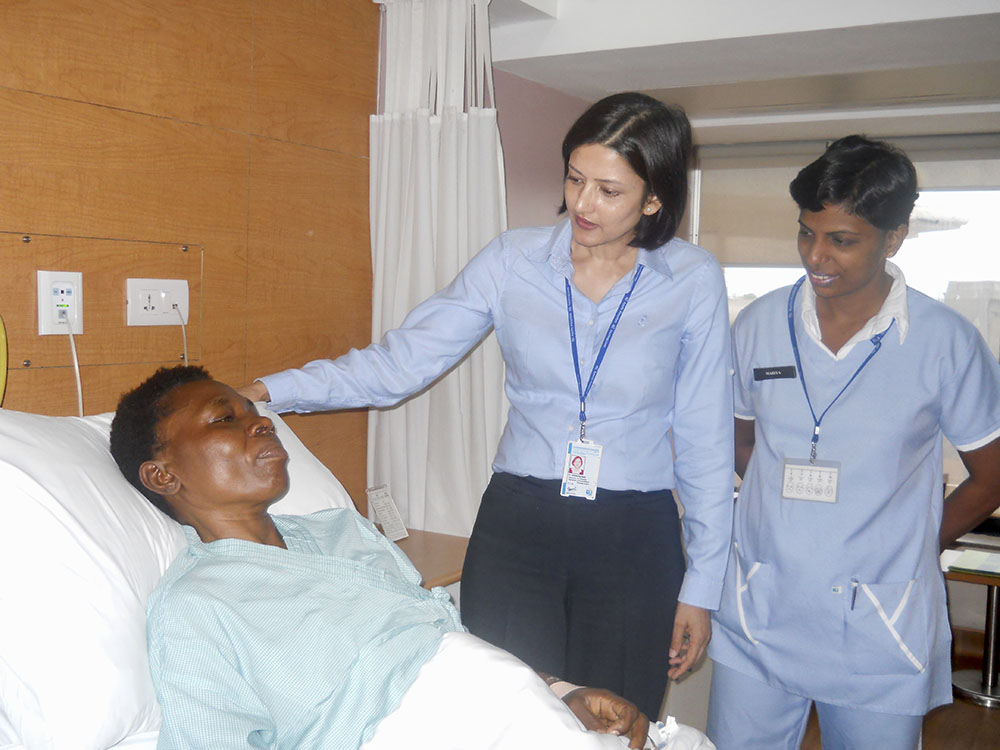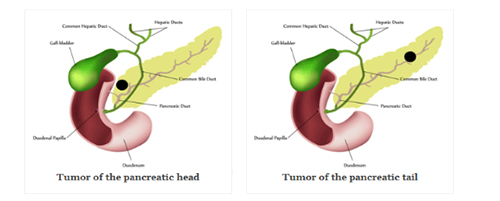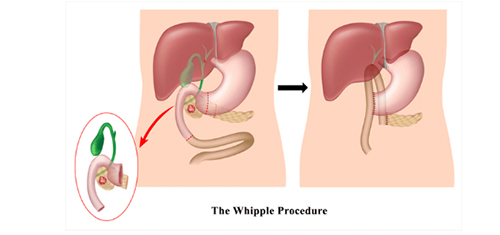Whipple Surgery
Excerpts from the experience of a patient who underwent a Whipple surgery for pancreatic cancer.

The patient was discharged 5 days following the Whipple Operation and is pictured here with Dr. Agrawal in the clinic 2 weeks later.
“After the diagnosis of pancreatic cancer I did not have much hope. But Dr. Agrawal reassured me and performed the complicated operation successfully. My family and I are deeply grateful to Dr. Agrawal for giving me a new life.”
Biliary Bypass
Excerpts from the experience of a patient who underwent a Roux-en-Y hepatico-jejunostomy (biliary bypass) for a distal biliary stricture secondary to chronic pancreatitis.

Dr. Agrawal with the patient.
“I came here to India to meet Dr. Shefali. So wonderfully she attended to us. And when she met me after the operation she said that everything worked as she planned. Saying with all my heart, thanking Dr. Shefali and her family.”
Subtotal Gastrectomy
Excerpts from the experience of a patient who underwent a subtotal gastrectomy with Roux-en-Y gastro-jejunostomy for stomach (gastric) cancer.
“I came here from Sikkim and met Dr. Shefali who has done a great job by saving my mother’s life who is 78 years old and suffering from stomach cancer. I appreciate her work as it was a big operation and everything went alright. I am very much thankful to the doctor and have full confidence in her.”
Surgery for Pancreatic Cancer
There are various types of pancreatic resections and the two most commonly performed operations for pancreatic cancer are the Whipple surgery or pancreaticoduodenectomy and distal pancreatectomy depending on the location of the tumor. The Whipple surgery is performed for tumors located in the head of the pancreas and distal pancreatectomy for tumors in the pancreatic tail or body. As the head of the pancreas lies in close association with the first portion of the small intestine (duodenum), lower part of the stomach and bile duct these structures have to be removed in continuity in a Whipple surgery to avoid tumor spillage.

1. Whipple Surgery
If the tumor is located in the head of the pancreas a Whipple surgery or pancreaticoduodenectomy is required which removes the head of the pancreas with the tumor and portions of the bile duct, stomach and duodenum. The pancreatic remnant, bile duct and stomach are then reconnected to a loop of small intestine to restore gastrointestinal continuity.

2. Distal Pancreatectomy
If the cancer is located in the tail of the pancreas, a distal pancreatectomy is required involving removal of the tail and body of the pancreas with the spleen.
3. Central or Total Pancreatectomy
Occasionally if the tumor is multifocal or involves the entire pancreas a total pancreatectomy may be required and a central pancreatectomy may be performed for cystic neoplasms or neuroendocrine tumors.
Dr. Agrawal discusses surgery for gastrointestinal cancers


